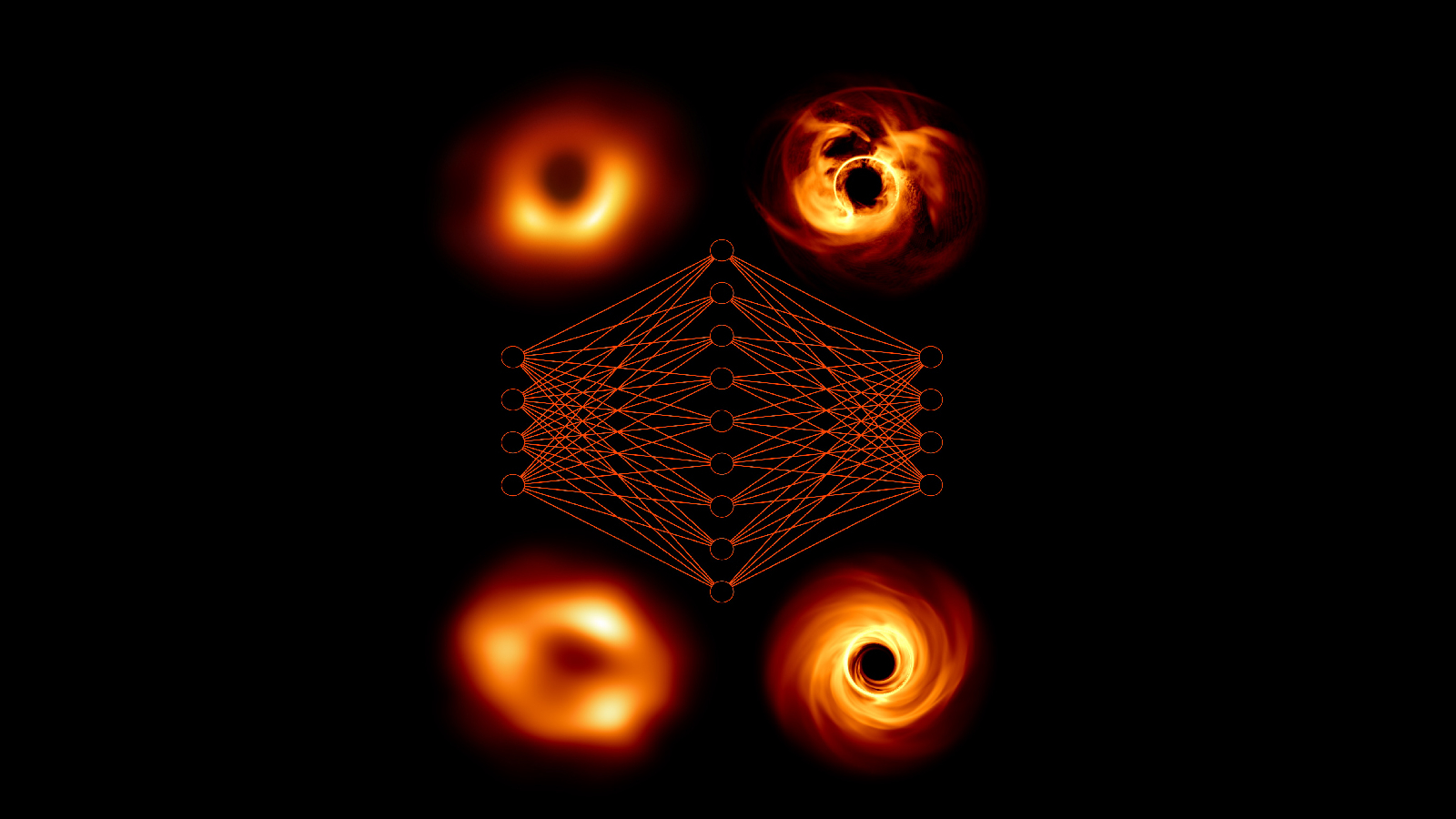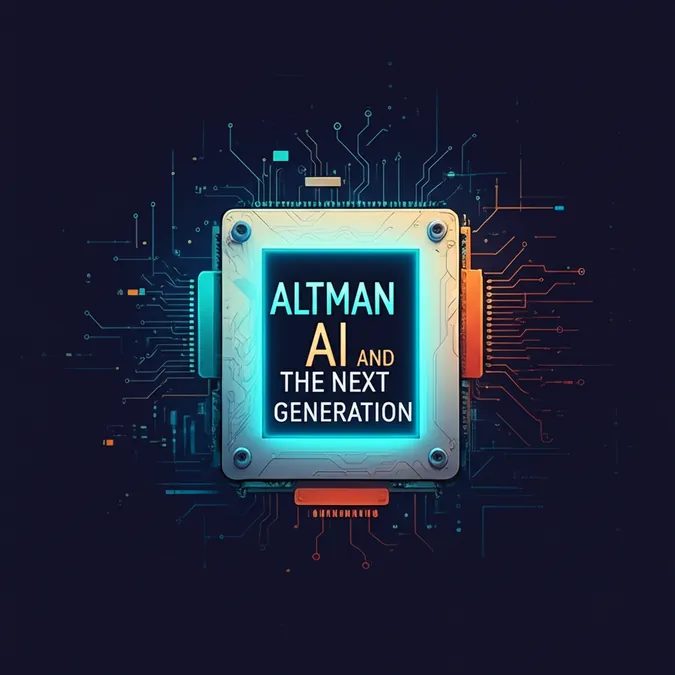Developer Offer
Try ImaginePro API with 50 Free Credits
Build and ship AI-powered visuals with Midjourney, Flux, and more — free credits refresh every month.
AI Enhances Black Hole Image Amidst Expert Concerns
A new artificial intelligence model suggests that Sagittarius A*, the supermassive black hole at the heart of our Milky Way galaxy, is spinning at nearly its maximum possible speed. This AI, trained on complex telescope data previously deemed too noisy for conventional analysis, aims to produce the most detailed black hole images to date. However, the scientific community, including a Nobel laureate, has voiced reservations about the model's accuracy due to the questionable quality of the input data.
 A new AI model (right) adds further details to the first-ever images of black holes (left) taken by the Event Horizon Telescope. (Image credit: EHT Collaboration/Janssen et al.)
A new AI model (right) adds further details to the first-ever images of black holes (left) taken by the Event Horizon Telescope. (Image credit: EHT Collaboration/Janssen et al.)
The Promise and Peril of AI in Astronomy
"I'm very sympathetic and interested in what they're doing," Reinhard Genzel, an astrophysicist at the Max Planck Institute for Extraterrestrial Physics in Germany and a recipient of the 2020 Nobel Prize in physics, commented to Live Science. "But artificial intelligence is not a miracle cure."
For many years, scientists have strived to observe and understand Sagittarius A*. The first-ever direct image of this galactic behemoth was unveiled in May 2022, yet many questions about its behavior remained unanswered.
An international team of researchers has now employed AI to extract more information about Sagittarius A* from data gathered by the Event Horizon Telescope (EHT). The EHT is not a single instrument but a global network of linked telescopes. It utilizes long electromagnetic waves to measure the photon ring surrounding a black hole.
 A comparison between the photos from the Event Horizon Telescope (left) and the AI-enhanced images (right). (Image credit: EHT Collaboration/Janssen et al.)
A comparison between the photos from the Event Horizon Telescope (left) and the AI-enhanced images (right). (Image credit: EHT Collaboration/Janssen et al.)
Tackling Noisy Data with Neural Networks
This observational technique, known as very long baseline interferometry, is highly susceptible to interference from water vapor in Earth’s atmosphere. This interference makes it challenging for researchers to interpret the collected data accurately.
"It is very difficult to deal with data from the Event Horizon Telescope," explained Michael Janssen, an astrophysicist at Radboud University in the Netherlands and a co-author of the study, in an interview with Live Science. "A neural network is ideally suited to solve this problem."
Janssen and his colleagues trained their AI model using EHT data that had been previously set aside due to excessive noise, meaning atmospheric static made it too difficult to decipher information using traditional methods.
New Insights and Lingering Questions
Through this AI-driven approach, the team generated a new, more detailed image of Sagittarius A*'s structure. Their findings, published in the journal Astronomy & Astrophysics, suggest novel features. For instance, the black hole appears to be spinning at "almost top speed," and its rotational axis seems to be pointing towards Earth, as stated by the researchers in a press release.
Determining the rotational speed of Sagittarius A* is crucial as it can provide clues about how radiation behaves around supermassive black holes and offer insights into the stability of the accretion disk of matter surrounding it.
Despite these intriguing results, skepticism remains. Genzel cautioned that the relatively low quality of the data fed into the AI model could have introduced unexpected biases. Consequently, he suggested the new image might be somewhat distorted and should not be accepted uncritically.
Future Directions for AI in Black Hole Imaging
Looking ahead, Janssen and his team intend to apply their AI technique to the latest EHT data and compare its outputs against real-world observational results. They hope this comparative analysis will help refine the model and enhance the accuracy of future simulations.
This story was originally reported by LiveScience.com, a partner site of Space.com.
Compare Plans & Pricing
Find the plan that matches your workload and unlock full access to ImaginePro.
| Plan | Price | Highlights |
|---|---|---|
| Standard | $8 / month |
|
| Premium | $20 / month |
|
Need custom terms? Talk to us to tailor credits, rate limits, or deployment options.
View All Pricing Details

